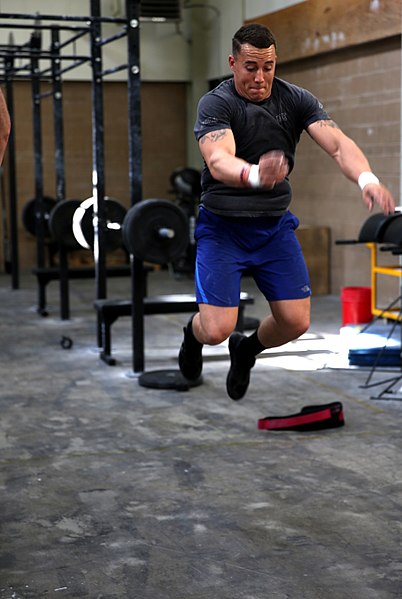Dec 6, 2017Reaching Higher Ground
Plyometrics are a great way to help athletes increase power, build muscle, and improve performance. However, to get the best benefit, and to avoid injury, they must be done correctly. In a blog for The Athletic Build, Justin Grinnell, CSCS, describes his three favorite plyometric exercises and how they can better prepare your athletes for game day.
According to Grinnell, plyometric training, or jump training, involves exercises that rapidly stretch a muscle (eccentric phase) and then quickly shortens it (concentric phase). These movements help to increase muscular power and explosiveness. But to achieve these benefits, the movements must always be done with proper technique.

“If you do not execute plyomtrics correctly, you run the risk of overtraining, and can cause unwanted injuries and pain,” writes Grinnell. “If you utilize them properly, they can help increase your power output in your fast twitch muscle fibers, improve explosive power, activate your nervous system to improve neural output, thus improving your weightlifting techniques, build muscle, and improve strength.”
The first plyometric exercise Grinnell introduces is the broad jump. This jump improves the reaction of fast-twitch muscle fibers and helps build athletes’ neural output during lower-body exercises like the deadlift, leading to more muscle growth and strength. The broad jump is also useful for conditioning, as it requires a lot of work from the metabolic system. Here are the steps to engaging in the broad jump correctly, according to Grinnell:
- Stand behind a mark on the ground with feet slightly apart.
- Take off on two feet, making sure to bend the knees and swing the arms to create forward drive.
- At the end of the jump, quickly flex the hips, knees, and ankle joints while landing as softly as possible in a balanced and athletic position.
Because of the demanding nature of this movement, Grinnell suggests engaging in the broad jump right after warm up. He also recommends doing two to three sets of two to five repetitions, with a two to three minute rest between each jump. To see the broad jump in action, check out this video from Velocity Sports Performance.
Grinnell’s second favorite plyometric exercise is the lateral bound. Similar to the broad jump, the lateral bound enhances the reaction of fast-twitch muscle fibers throughout the body. Since it is a unilateral exercise, meaning it is performed on one leg at a time, the lateral bound also reduces muscle imbalances and ensures that each side of the body is strengthened equally. Follow these steps, laid out by Grinnell, to make sure your athletes are engaging in the correct technique:
- Stand on your right foot.
- Using your right leg, jump as high and far as you can to your left and land on your left foot.
- After landing, hold your position for three seconds.
- Using your left leg, repeat the motion to the right.
- Hold the position for three seconds.
If your athletes can do this movement completely and correctly, and need to be further challenged, they can move on to rapid response lateral bounds. Instead of pausing, they will immediately jump off of each foot after landing. To make sure your athletes have the energy to do this movement correctly, Grinnell suggests placing it directly after warm ups. He recommends doing two to three sets of five repetitions, with one to two minutes of rest between each.
The last plyometric exercise that Grinnell discusses is the depth jump. However, he stresses athletes should only do this exercise if they can hold proper form during a squat or squat jump, are not suffering from tendonitis, or pain in the knee or ankle, and are experienced in lifting. Once you are certain your athletes are ready, the depth jump can help build a more explosive and stronger lower body.
“The depth jump involves minimal ground contact time with maximum power output,” writes Grinnell. “This in turn activates some deep fast-twitch muscle fibers that cannot be hit with traditional weight training. Due to the depth jumps ability to increase muscle activation, nervous system priming, and improvement in explosive movements, this will also transfer over into the weight room, leading to more weight lifted and increase output.”
Here are the steps to carrying out the depth jump:
- Start with a box at 12 inches in height.
- Step off of the box, landing on both feet.
- Jump off the ground as fast as possible.
- Increase the box height to 24 inches as you advance.
Grinnell suggests doing two to four sets of three to five repetitions, with two to three minutes of rest between jumps. Like the other two, he recommends that the depth jump is done after warm up to make sure athletes have the energy to perform the movement correctly. To see the depth jump in motion, check out this video from Wil Fleming, CSCS.
Top Ad ZoneID:
49890


